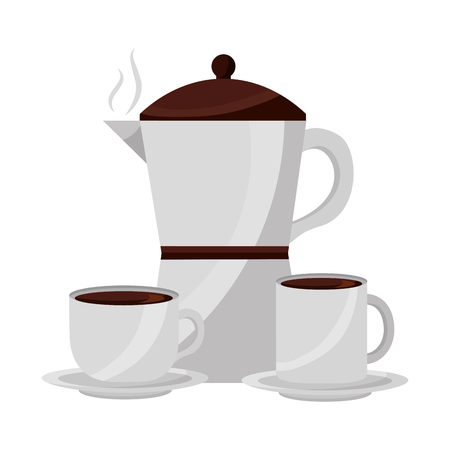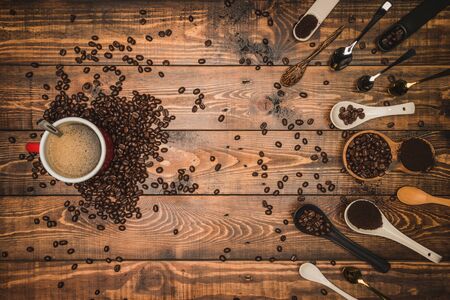Understanding Espresso Basics
If youre just starting your home espresso journey, its important to first understand what makes espresso so special. Espresso isnt just a strong cup of coffee—its a brewing method that combines finely ground coffee beans, hot water, and high pressure to create a concentrated shot packed with flavor and aroma.
What Makes Espresso Unique?
Espresso is known for its bold taste, thick texture, and rich crema—the golden layer of foam that forms on top of a well-pulled shot. Unlike drip or pour-over coffee, espresso is brewed under pressure, which extracts the oils and soluble compounds quickly, resulting in an intense and flavorful experience.
A Brief Look at Its Origins
The story of espresso begins in Italy in the early 1900s. The word “espresso” means “pressed out” in Italian, referring to how hot water is forced through compacted coffee grounds. Invented as a quick way to serve customers fresh coffee in cafés, espresso has since become a cornerstone of coffee culture worldwide.
Why Pressure, Grind Size, and Brew Time Matter
To make great espresso at home, youll need to master three key variables: pressure, grind size, and brew time. Each plays a critical role in the final taste of your shot.
| Variable | What It Does | Ideal Range |
|---|---|---|
| Pressure | Pushes water through the coffee grounds to extract flavor | 9 bars (standard for most machines) |
| Grind Size | Affects how quickly water flows through the grounds | Fine, like table salt |
| Brew Time | Determines how much flavor is extracted | 25–30 seconds per shot |
The Role of Crema
The crema isnt just for looks—it’s a sign of freshness and proper extraction. A good layer of crema means your grind size, pressure, and brew time are likely on point. It also seals in the flavors and aromas until youre ready to take that first sip.
Quick Tip:
If your espresso tastes sour or watery, try adjusting your grind finer. If it tastes bitter or burnt, go slightly coarser or shorten your brew time.
Remember:
The beauty of making espresso at home is that you can tweak every variable until it’s just right for your taste buds. Dont be afraid to experiment—it’s all part of the process!
2. Essential Equipment for Home Espresso
If youre serious about making espresso at home, having the right gear is key. You dont need a full-scale coffee shop setup, but a few essential tools will make all the difference in your daily brew. Heres what every home barista should consider adding to their kitchen.
Espresso Machine
This is the heart of your espresso setup. Home espresso machines come in different types—manual, semi-automatic, and fully automatic. Most beginners start with a semi-automatic machine because it offers a balance between control and ease of use.
Popular Types of Home Espresso Machines
| Type | Pros | Cons |
|---|---|---|
| Manual | Full control over brewing; great for purists | Steep learning curve; time-consuming |
| Semi-Automatic | Good balance of control and convenience | Requires some practice to get consistent shots |
| Fully Automatic | Easy to use; consistent results | Less control over variables like extraction time |
Coffee Grinder
A quality burr grinder is non-negotiable for great espresso. Blade grinders just wont cut it—they create uneven grounds that can ruin your shot. Burr grinders allow for precise grind size adjustment, which is crucial for dialing in your espresso.
Why Grind Size Matters
The grind size affects how fast or slow water flows through the coffee puck. Too fine, and you risk over-extraction; too coarse, and you get a weak, under-extracted shot. A burr grinder gives you the control needed to get it just right.
Tamper
Tamping is the act of compressing your ground coffee into the portafilter before brewing. A good tamper should fit your portafilter snugly and feel comfortable in your hand. Consistent tamping pressure helps ensure even extraction.
Other Handy Accessories
While not absolutely necessary, these tools can help elevate your espresso game:
- Scale: Weighing your coffee grounds and espresso shots improves consistency.
- Dosing funnel: Prevents spills when transferring grounds into the portafilter.
- Knock box: Makes disposing of used coffee pucks quick and mess-free.
- Milk frothing pitcher: Essential if you want to make lattes or cappuccinos.
- Coffee distribution tool: Helps level out grounds before tamping for better extraction.
Investing in these tools doesn’t have to break the bank. Start with the basics—a solid machine and grinder—and build from there as you refine your skills as a home barista.

3. Dialing In: Grind Size, Dose, and Tamping
Dialing in your espresso is all about fine-tuning three key variables: grind size, coffee dose, and tamping pressure. Getting these right is essential to pulling consistent, flavorful shots at home. Let’s break down each element and how to adjust them like a pro.
Grind Size: Finding the Sweet Spot
The grind size of your coffee beans directly affects how fast or slow water flows through your puck. If your grind is too coarse, the water will rush through, resulting in a weak, under-extracted shot. Too fine, and you risk over-extraction with bitter flavors.
Grind Size Guide
| Grind Texture | Brew Time (25-30 sec target) | Flavor Profile |
|---|---|---|
| Too Coarse (like sea salt) | < 20 seconds | Sour, watery, under-extracted |
| Ideal (fine like table salt) | 25–30 seconds | Balanced, sweet, full-bodied |
| Too Fine (powdery) | > 35 seconds | Bitter, harsh, over-extracted |
Coffee Dose: Measuring Precisely
The dose refers to how much ground coffee you use for each shot. Most home baristas aim for around 18–20 grams for a double shot. Consistency is key—use a digital scale to weigh your coffee every time.
Suggested Dosing Range
| Basket Size | Recommended Dose |
|---|---|
| Single Shot Basket | 7–9 grams |
| Double Shot Basket | 18–20 grams |
| Triple Shot Basket | 21–24 grams |
Tamping Pressure: Even and Firm
Tamping compresses the grounds evenly so that water flows through uniformly during extraction. Aim for about 30 pounds of pressure—enough to feel firm but not overly forceful. More important than strength is consistency and an even surface.
Tamping Tips:
- Keep it level: Uneven tamping leads to channeling and uneven extraction.
- Use a flat tamper: It helps distribute pressure more evenly across the puck.
- Dont twist: Press straight down without twisting at the end—it doesnt help seal the puck and may cause inconsistency.
Mastering grind size, dose, and tamping takes practice—but once you get the hang of it, your espresso shots will become more consistent and delicious every time. Keep tasting, adjusting, and enjoying the process!
4. The Perfect Pull: Timing and Technique
Getting the perfect espresso shot—often called “the pull”—is all about balance. Its not just about turning on your machine and waiting; its about controlling time, temperature, and technique to bring out the best flavor in your coffee.
Understanding Shot Timing
The timing of your espresso shot has a huge impact on taste. A standard espresso shot typically takes between 25–30 seconds to extract. If it runs too short or too long, the flavor can be off.
| Shot Time | Taste Profile |
|---|---|
| < 20 seconds (Under-extracted) | Sour, weak, watery |
| 25–30 seconds (Ideal) | Balanced, rich, smooth |
| > 35 seconds (Over-extracted) | Bitter, dry, harsh |
Dialing in Water Temperature
Water thats too hot or too cool can ruin even the best beans. For most espresso machines, the sweet spot is around 195°F–205°F (90°C–96°C). If your machine lets you adjust temperature, stay within this range for optimal results.
Quick Tip:
If your shots taste burnt or bitter, lower the temp slightly. If theyre sour or flat, try raising it a few degrees.
Mastering Extraction Methods
Your extraction method includes everything from how fine you grind your beans to how much pressure you tamp with. These small details work together to influence how water flows through the coffee puck during brewing.
Key Extraction Factors to Watch:
- Grind Size: Too coarse = fast flow & under-extraction. Too fine = slow flow & over-extraction.
- Tamping Pressure: Aim for firm, even pressure—about 30 pounds of force is a good starting point.
- Dose Amount: Typically 18–20 grams for a double shot. Use a scale for precision.
Fine-Tuning Your Pull
Once youve got your basics down, start refining. Taste each shot critically and make one adjustment at a time—whether its grind size, tamp pressure, or brew time—to see how it affects the flavor. Keep notes so you can repeat what works best.
Look for These Signs of a Great Pull:
- Crema: Thick, golden-brown foam on top that lasts for at least a minute.
- Flow Rate: Steady stream like warm honey—not too fast or drippy.
- Aroma: Rich and inviting with no burnt or sour notes.
Nailing the perfect pull might take some trial and error, but once you do, its incredibly rewarding—and totally worth it for that smooth, café-quality espresso right in your kitchen.
5. Troubleshooting and Flavor Tweaks
Even with the best espresso gear and beans, things don’t always go smoothly. Let’s walk through some common espresso issues you might face at home and how to tweak your setup to match your ideal flavor profile. Dialing in your espresso is all about small adjustments and paying attention to what your shot is telling you.
Common Espresso Problems
| Problem | Signs | Possible Causes | Fixes |
|---|---|---|---|
| Channeling | Uneven or fast water flow, sour or bitter taste | Poor tamping, uneven distribution, grinder clumping | Use a distribution tool, tamp evenly, adjust grind size |
| Under-Extraction | Sour, weak flavor; pale crema; fast shot time (under 20 sec) | Grind too coarse, low dose, not enough pressure | Use finer grind, increase dose, check machine pressure |
| Over-Extraction | Bitter, dry taste; dark crema; slow shot time (over 35 sec) | Grind too fine, high dose, over-tamping | Use coarser grind, reduce dose slightly, tamp with less force |
Tweaking for Taste
If youre not getting the flavor you want—even when shots are pulling correctly—it’s time to experiment with variables that affect taste.
Dose and Yield Ratio
The standard espresso ratio is around 1:2 (e.g., 18g of coffee yielding 36g of espresso). Changing this can affect body and intensity:
| Brew Ratio Type | Description | Flavor Profile |
|---|---|---|
| Ristretto (1:1–1:1.5) | Less water through the puck | Syrupy, intense, lower acidity |
| Normale (1:2) | Balanced extraction | Classic espresso balance of sweetness and bitterness |
| Lungo (1:3+) | More water through the puck | Milder body, higher bitterness, more caffeine |
Water Temperature
Aim for water between 195°F–205°F. Too hot? You’ll burn the coffee. Too cool? The flavors may be flat. Many home machines let you adjust this—experiment within that range to bring out different notes in your beans.
Tamp Pressure & Consistency
Your tamp should be firm and level. You don’t need Hulk strength—just consistent pressure each time. Uneven tamps lead to channeling and inconsistent results.
The Espresso “Taste Wheel” Approach
If your espresso tastes off but you’re not sure what to change, use this simple guide:
| Taste Note | What It Might Mean | Adjustment Tip |
|---|---|---|
| Sour or sharp acidity | Under-extracted shot or low temp water | Finer grind or raise water temp slightly |
| Bitter or burnt flavors | Over-extracted or water too hot | Coarser grind or lower temp a bit |
| Dull or flat flavor | Bland beans or under-dosed shot | Try fresher beans or increase dose slightly |
| Astringent/dry finish | Poor distribution or channeling during extraction | Smooth out puck prep and ensure even tamping/distribution |
The Takeaway?
Your espresso journey at home is all about trial and error. Keep track of your settings—dose, grind size, yield time—and how each shot tastes. Over time, youll build a mental “map” of how changes affect your flavor so you can quickly adjust on the fly.


